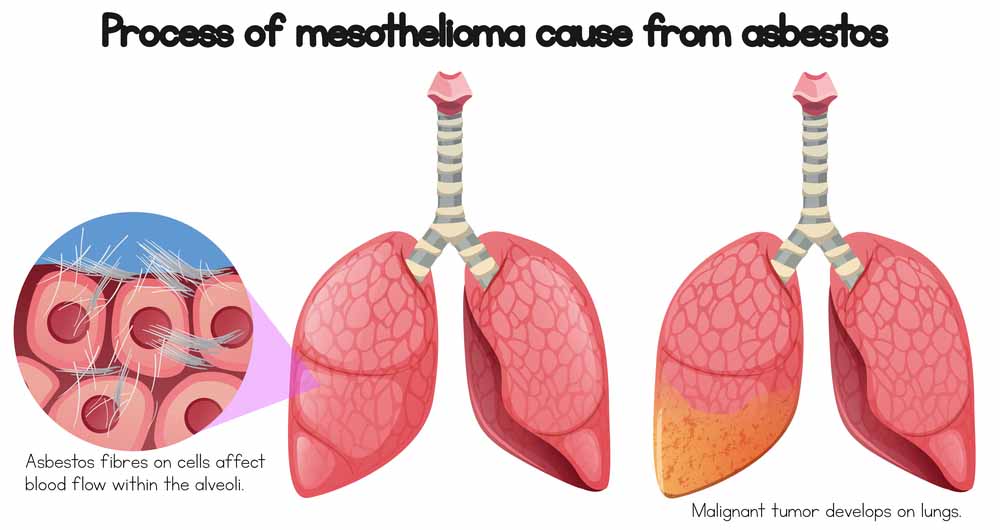Causes and Risk Factors

In general, cancer starts when a number of changes (mutations) occur in the DNA of a cell. The DNA provides instructions to tell a cell what to do while mutations tell the cells to expand and multiply out of reach. Buildup of such abnormal cells form a tumor.
It is not clear what causes the genetic mutations that contribute to mesothelioma, although researchers have identified specific factors that could increase the risk. Cancers are likely to develop because of the interaction between several variables, such as genetic conditions, your environment, your health and lifestyle choices.
In the case of mesothelioma, the most common and primary factor is asbestos exposure. Asbestos is a mineral occurring naturally in the environment. The fibres of asbestos are solid and heat resistant, making them valuable in a wide variety of applications, such as flooring, insulation, brakes, shingles and many other items.
Once asbestos is broken up, such as when the insulation of asbestos is removed, or during the mining process, dust can be produced. When the dust is inhaled, the asbestos fibers may lodge in the lungs or in the stomach and cause inflammation that can lead to mesothelioma. It’s not clear precisely how this occurs. Mesothelioma can take 20 to 60 years or more to grow after initial exposure to asbestos.
Most people with exposure to asbestos never develop mesothelioma. This suggests that other factors can be involved in deciding if someone will develop mesothelioma. For example, you may inherit a genetic predisposition to cancer, or any other body conditions or diseases may increase your risk.
There are several factors linked to an increase in the risk of mesothelioma. These include:
History of exposure to asbestos – If you have been exposed to asbestos fibers at work, your risk of developing pleural mesothelioma is greatly increased.
Living with someone who has exposure to asbestos – People who are in constant exposure to asbestos can carry its fibers home on their clothing and skin. Exposure to these fibers for several years will put others (family members and friends) at risk of mesothelioma. People working with high levels of asbestos can reduce the risk of taking home asbestos fibers by changing clothes and showering before leaving work.
The family history – If your parent or sibling has mesothelioma, you could be at an elevated risk for mesothelioma.
Exposure to radiation therapy – You could have an elevated risk of mesothelioma if you had radiation treatment for cancer in your chest or abdomen.

